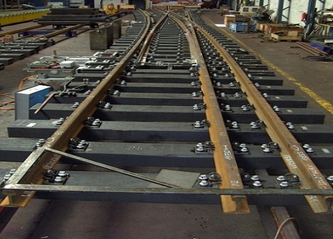Joint bar/Fish Plate >> Switches& Crossings For r
2016-11-24 10:48 Clickú║times
Switches& Crossings For rail industry

Switches and crossings play an essential role in connecting the rail network.We use them to guide trains from one track to another and to enable lines to cross paths. Put simply, they're the junctions that allow us to create a muti-lined, multi-routed rail network. They come in many different shapes and sizes and all are made to measure for their specific location. Train wheels move along the rails guided only by the pound coin sized area of wheel that sits on the rail adead. The wheel rim or flange doesn't normally touch the rail.
TAGú║

Switches and crossings play an essential role in connecting the rail network.We use them to guide trains from one track to another and to enable lines to cross paths. Put simply, they're the junctions that allow us to create a muti-lined, multi-routed rail network. They come in many different shapes and sizes and all are made to measure for their specific location. Train wheels move along the rails guided only by the pound coin sized area of wheel that sits on the rail adead. The wheel rim or flange doesn't normally touch the rail.
Flanges are only a cast resort to prevent the wheels in one of two directions. A crossing creates a gap in the rail for the flange to pass through.
This is a switch. Also known as point.
This is called the stock rail.
This is a switch. Also known as point.
This is called the stock rail.
It's a non-moving part of the switch. The two switch blades are fixed to each other by a stretcher bar to ensure that wehn one is against its stock rail the other is fully clear and provide room for the wheel flange to pass through cleanly.
This is a crossing.
This is a crossing.
It's the non- moving part of the switch and crossing layout that allows a train to pass in either direction once the switch has been set. Crossings can be either fabricated, made up of two machined rails joined together, or they can be cast as a single unit. Morden crossings are now cast from manganese steel which is an advanced alloy that gets harder with use.
There are many different types of switch and crossing. They include turn-out, diamonds, cross-overs, and slip-diamonds.
If you need to know more product details, please contact us:
Tel:+86-29-86693861
Skype:helly-hei
E-mail:helly@rig123.com
E-mail:jerry@rig123.com
